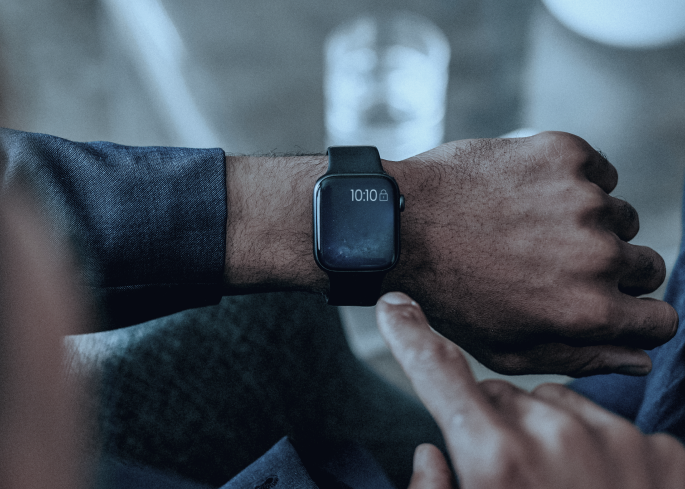HOW
USING MEDICINAL CANNABIS
Once a prescription is received, a patient might still have a lot of questions about what to expect from medicinal cannabis. Learn more about how medicinal cannabis is used.
How much or what dosage of medicinal cannabis should a patient take?
The ideal dosage of medicinal cannabis should be always determined by a patient’s treating physician, as he/she is in the best position to instruct a patient about what better serves their concrete medical condition. As a general rule, the optimal dose is the lowest dose that can control a patient’s symptoms without side effects. To accomplish this objective, a physician may ask a patient to start with a low dose and to up-titrate according to a proposed titration scheme. This may allow for better tolerability. Different patients may require or tolerate different doses

Is there a recommended starting dose for medicinal cannabis?
A patient’s treating physician will be able to recommend the best starting dose for their medicinal cannabis product. It may vary according to the symptoms to treat, the type of product, the patient’s previous experience with cannabinoids, and their concrete medical condition.
Usually, an initial oral daily dose with a THC-containing product should be started in the evening with between 1.25mg and 2.5mg THC. 1 For patients in need of inhaled medicinal cannabis, there is a greater variability based on the deepness or type of inhalation, although a general starting point can be between 25mg and 100mg of inhaled dried flower.2 A patient’s physician will instruct them what better suits their concrete medical condition.
How long after taking medicinal cannabis can a patient expect an effect?
This is hard to say because it depends on many factors. Cannabis that is inhaled enters the bloodstream quickly. The peak effects of inhaled cannabis can be felt as quickly as 5 to 10 minutes. Those effects usually last between 2 and 4 hours. On the other hand, cannabis that is ingested can take up to 2 or 3 hours to reach peak effect, however the effect could last for 6 to 12 hours. 1

Should a patient take medicinal cannabis with or without food?
A patient can safely take oral medicinal cannabis on an empty or full stomach. However, the amount of food a patient has recently consumed can influence the quantity of cannabinoids that is absorbed. 3 The general recommendation is to take a medicinal cannabis product under the same conditions in order to maintain stable absorption of the cannabinoids. A patient’s physician will be able to better recommend what is most suitable for their concrete medical condition.
Does a patient have to smoke medicinal cannabis?
No. In fact, smoking is not recommended.1,2 There are many ways to inhale or ingest medicinal cannabis. For example, as an alternate to smoking, medicinal cannabis can be inhaled through a vaporizer. A vaporizer is not only safer, since the patient will not inhale a product resulting from the combustion of the dried flower, but also more accurate from a dosing standpoint.
Is there a recommendation on how to inhale medicinal cannabis?
A patient can use a vaporizer. 3 Each vaporizer has its own specific setup, but the basic steps should include:
What is a vaporizer?
A vaporizer is a device that heats medicinal cannabis in the form of dried flowers. It uses a lower temperature than an open flame, so a vaporizer allows patients to inhale cannabis in vapor form, rather than smoke. Inhalation allows cannabinoids within the plant to be volatilized with heat, enter the bloodstream, and reach the brain more quickly via inhalation, thereby providing fast-acting relief of symptoms. In addition, vaporization avoids combustion and reduces the presence of potentially harmful irritants that may be contained in cannabis smoke.
Which form of medicinal cannabis should a patient take?
That is up to a patient and their physician. Generally, medicinal cannabis that is intended for inhalation acts more quickly and lasts a shorter period, so it is more appropriate for episodic acute symptoms. In contrast, medicinal cannabis intended for oral use usually takes a longer time to act, but then lasts for a longer period, so it is more appropriate for chronic conditions. A patient’s physician will decide if and what type of medicinal cannabis product is suitable for their medical condition.
Is there a risk of potential interactions with a patient’s current medications?
There is a potential for interactions between medications. Patients should make sure to ask their physician or pharmacist about potential interactions with existing medications.
If a patient is taking medicinal cannabis, should they stop taking their other medications?
A patient should only stop taking existing medications if they are advised to do so by their physician.
If a patient begins taking medicinal cannabis, will they be able to stop taking their opioid prescription?
Medicinal cannabis offers some of the same therapeutic benefits as opioids, however it is only recommended as an adjuvant therapy. Therefore, they should not stop taking any current medication unless they are advised to do so by their physician.
Can a patient drive when they are taking medicinal cannabis?
Like many other medications, medicinal cannabis can influence a patient’s ability to stay alert, drive, or operate heavy machinery. 2,3 Patients should understand how their medicinal cannabis product and dosage affects their ability to function and stay alert prior to driving, operating machinery, or engaging in other dangerous activities. Patients should avoid driving until they reach a stable dosage for 5 to 7 days. 2
Patients should be familiar with the legal amount of THC before driving. Each patient should wait at least 3 hours after inhalation of medicinal cannabis, or up to 8 hours if psychotropic effects are experienced. Conversely, a patient should wait at least 6 hours after oral ingestion of medicinal cannabis, or up to 8 hours if psychotropic effects are experienced. 2

Can a patient travel with medicinal cannabis?
Cannabis is authorized for medicinal use in some countries, but not all of them. However, each country may have different rules or limitations on the quantity, type, and strength of medicinal cannabis that is legal for medicinal use. To bring medicinal cannabis into another country, a patient may be required to fill out paperwork prior to their visit.
For example, a patient’s physician can provide a certificate according to Article 75 of the Schengen Implementing Convention if they are travelling up to 30 days in one of the countries of the Schengen Implementing Convention. 5 Otherwise, the transport of medicinal cannabis across an international border could be illegal. Patients should contact the embassy of the country they would like to visit so that they can learn how to travel legally with their medicinal cannabis. If a patient is travelling by air, they should also reach out to the airline to understand the airline’s policy on cannabis transportation.
Can a patient pass a drug test if they take medicinal cannabis?
If a patient inhales or ingests medicinal cannabis, there is no guarantee that they will pass a drug test. If a patient has THC in their system, there is a chance that they may fail a drug test. Patients should check the details of the drug test and if authorized medicinal use of cannabis is allowed.
How does a patient deal with family members who are unsupportive about medicinal cannabis?
When a family member has an issue with a patient’s decision to use medicinal cannabis, it is important to have an open conversation. Patients are likely much more informed about medicinal cannabis and need to help educate their family. Patients should try to calmly explain how it benefits them and their medical condition, and why they decided to take it. At the same time, patients should listen to their family’s concerns and address them openly.
An older family member already has a prescription for medicinal cannabis. How do I convince them to consider filling the prescription and trying medicinal cannabis?
A patient can use a vaporizer.3 Each vaporizer has its own specific setup, but the basic steps should include:
- For Portugal, please click here
- For Germany, please click here
- For France, please click here
- For other countries, please consult your local health authority for further information.
If your family member has a qualifying medical condition that could be treated with medicinal cannabis, finding information from applicable medical societies or patient organizations could also help, especially if you can show how their most troublesome symptoms could be alleviated. Finally, joining your family member to consult with their physician can also help alleviate their concerns.